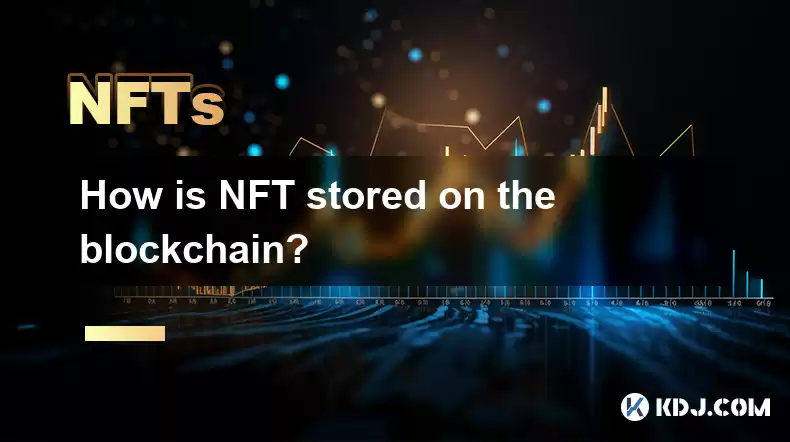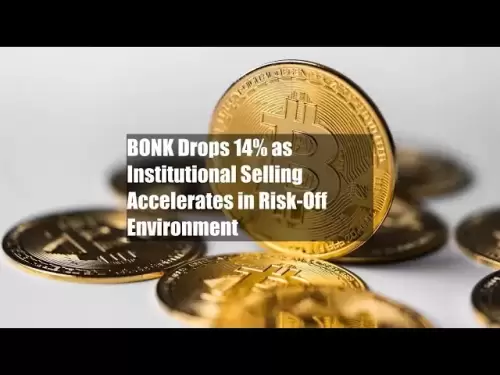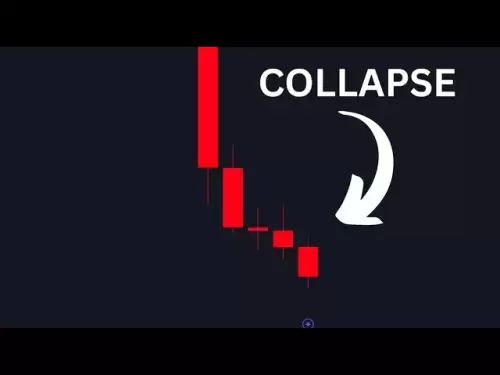-
 Bitcoin
Bitcoin $113900
-1.39% -
 Ethereum
Ethereum $3517
-4.15% -
 XRP
XRP $3.009
1.59% -
 Tether USDt
Tether USDt $0.9997
-0.04% -
 BNB
BNB $766.8
-1.41% -
 Solana
Solana $164.6
-2.38% -
 USDC
USDC $0.9998
-0.02% -
 TRON
TRON $0.3277
0.65% -
 Dogecoin
Dogecoin $0.2023
-1.67% -
 Cardano
Cardano $0.7246
0.05% -
 Hyperliquid
Hyperliquid $38.27
-4.77% -
 Sui
Sui $3.528
-0.52% -
 Stellar
Stellar $0.3890
-0.73% -
 Chainlink
Chainlink $16.16
-2.69% -
 Bitcoin Cash
Bitcoin Cash $539.9
-4.38% -
 Hedera
Hedera $0.2425
-2.00% -
 Avalanche
Avalanche $21.71
-0.97% -
 Toncoin
Toncoin $3.662
5.73% -
 Ethena USDe
Ethena USDe $1.000
-0.02% -
 UNUS SED LEO
UNUS SED LEO $8.964
0.35% -
 Litecoin
Litecoin $107.7
2.33% -
 Shiba Inu
Shiba Inu $0.00001223
-0.40% -
 Polkadot
Polkadot $3.617
-0.97% -
 Uniswap
Uniswap $9.052
-2.49% -
 Monero
Monero $295.1
-3.79% -
 Dai
Dai $0.9999
0.00% -
 Bitget Token
Bitget Token $4.315
-1.85% -
 Pepe
Pepe $0.00001060
0.11% -
 Cronos
Cronos $0.1342
-2.72% -
 Aave
Aave $256.0
-0.87%
How is NFT stored on the blockchain?
NFTs' digital assets aren't stored directly on the blockchain; instead, blockchain stores metadata linking to off-chain storage (like IPFS or centralized servers), preserving ownership verification while maintaining scalability and cost-effectiveness.
Mar 17, 2025 at 08:35 am

Key Points:
- NFTs are not stored directly on the blockchain in their entirety. Instead, only metadata pointing to the NFT's location is stored.
- This metadata includes a link to the actual file (image, video, etc.) stored off-chain, usually on a decentralized storage network or a centralized server.
- The blockchain acts as a verifiable ledger of ownership and authenticity, ensuring the NFT's uniqueness and provenance.
- Different blockchains and NFT marketplaces utilize various storage solutions, impacting accessibility and costs.
- Security concerns exist regarding off-chain storage, necessitating careful selection of reputable platforms.
How is NFT stored on the blockchain?
NFTs themselves, the actual digital asset (image, video, audio, etc.), are not stored directly on the blockchain. The blockchain's limited storage capacity and high transaction costs make this impractical. Instead, what's stored on the blockchain is a token representing ownership of the NFT. This token contains metadata – a pointer – to the location of the actual digital asset. This pointer usually contains a link to where the file is stored, often on a decentralized storage network like IPFS (InterPlanetary File System) or Arweave, or on a centralized server operated by a marketplace or platform.
The blockchain records crucial information about the NFT, such as its unique identifier, creator, ownership history, and any associated smart contract details. This information proves the NFT's authenticity and its chain of ownership. Think of the blockchain as a secure, immutable ledger confirming who owns which NFT, while the actual NFT resides elsewhere. The link to the actual asset is essential for accessing and viewing the NFT.
Choosing a storage solution for the actual NFT file is a critical decision. Decentralized storage networks like IPFS offer higher resilience against censorship and single points of failure. However, they can be slower and more complex to use than centralized servers. Centralized servers, while potentially faster and easier to access, pose risks if the server goes down or the company operating it faces financial difficulties.
Different NFT marketplaces and platforms often have their preferred storage methods. Some may utilize a combination of decentralized and centralized storage, aiming for a balance between security, accessibility, and cost-effectiveness. Understanding the storage method used by a specific platform is crucial before purchasing an NFT.
The process of minting an NFT often involves uploading the digital asset to a chosen storage network and then creating the metadata on the blockchain, linking the two. This metadata acts as a certificate of authenticity, proving ownership and verifiable history. The act of transferring an NFT involves updating the ownership record on the blockchain, not transferring the actual digital file.
The security of off-chain storage is a significant concern. Decentralized storage offers a higher degree of security, as it eliminates the single point of failure inherent in centralized solutions. However, even with decentralized storage, there are risks. Data integrity and accessibility can still be affected by network issues or vulnerabilities within the storage protocol itself.
The process of viewing an NFT generally involves accessing the metadata stored on the blockchain. This metadata contains the link to the actual digital asset's location. Your wallet or the NFT marketplace then retrieves the asset from its storage location and displays it to you. This two-step process ensures that the blockchain remains efficient while still providing access to the actual NFT.
This separation of the NFT's data from the blockchain is a deliberate design choice. It allows for scalability and cost-efficiency, as storing large files directly on the blockchain would be impractical and expensive. The emphasis remains on the blockchain’s role as a secure and transparent record of ownership, not as a repository for the NFT itself.
Common Questions:
Q: Can my NFT be lost if the off-chain storage fails?
A: Yes, if the off-chain storage where the actual NFT file is located fails and there's no backup, you may lose access to the visual representation of your NFT. However, the ownership record on the blockchain remains intact, proving your ownership. You might not be able to view it, but the NFT's existence and ownership are still recorded.
Q: What happens if the blockchain where my NFT is recorded goes down?
A: The underlying blockchain’s functionality would need to be restored. Most blockchains are decentralized and highly resilient, so a complete shutdown is unlikely. Even if a specific node or network segment goes down, other nodes maintain the integrity of the blockchain data, ensuring the NFT’s record remains secure.
Q: Are all NFTs stored in the same way?
A: No. Different blockchains and marketplaces employ various storage solutions. Some might use IPFS, others Arweave, and some may even use centralized servers. The choice affects accessibility, cost, and security. It’s crucial to understand the storage mechanism employed by the platform you are using.
Q: How can I verify the authenticity of an NFT?
A: The authenticity is verified through the metadata on the blockchain. This metadata includes a unique identifier, creator information, and a verifiable ownership history. You can use blockchain explorers to view this information and confirm the NFT’s legitimacy and provenance.
Q: Is it possible to store NFTs directly on the blockchain?
A: While technically possible for very small NFTs, it's generally impractical due to the blockchain's storage limitations and high transaction costs. This method would make NFTs incredibly expensive to create and transfer. The current system of storing metadata on the blockchain and the actual asset off-chain is far more efficient.
Disclaimer:info@kdj.com
The information provided is not trading advice. kdj.com does not assume any responsibility for any investments made based on the information provided in this article. Cryptocurrencies are highly volatile and it is highly recommended that you invest with caution after thorough research!
If you believe that the content used on this website infringes your copyright, please contact us immediately (info@kdj.com) and we will delete it promptly.
- Bitcoin Strategy: Saylor's Not Hoarding, He's Building an Empire
- 2025-08-02 22:30:12
- Bitcoin Bloodbath: Macro Pressures and Liquidations Unleash Crypto Chaos
- 2025-08-02 22:30:12
- Tron, Cold Wallets, and Crypto Trends: What's Hot in the Market?
- 2025-08-02 23:10:12
- Bitcoin's Wild Ride: Davinci, Investors, and the $500K Dream
- 2025-08-02 23:50:12
- Worldcoin, Identity, WLD Price: Decoding the NYC Crypto Buzz
- 2025-08-02 21:10:12
- Shiba Inu: Utility and Community Strength Drive Crypto's Evolution
- 2025-08-02 21:50:12
Related knowledge

Is it possible to get a refund on an NFT?
Jul 21,2025 at 08:35pm
Understanding NFT Transactions and RefundsWhen you purchase an NFT (Non-Fungible Token), the transaction is typically recorded on a blockchain, making...

What happens to NFTs when the owner dies?
Jul 22,2025 at 02:43pm
Legal Ownership and Digital AssetsWhen an individual owns NFTs, the question of what happens to these assets upon their death is a pressing one. NFTs ...

What are the tax implications of gifting an NFT?
Jul 19,2025 at 04:21am
Understanding the Basics of NFT GiftingGifting a Non-Fungible Token (NFT) involves transferring ownership from one individual to another without recei...

Can you trade NFTs on your phone?
Jul 18,2025 at 04:29am
Trading NFTs on Mobile DevicesYes, you can trade NFTs on your phone, and the process has become increasingly streamlined thanks to a variety of mobile...

How to find out about upcoming NFT mints?
Jul 18,2025 at 11:50am
Exploring NFT Minting OpportunitiesUnderstanding the landscape of upcoming NFT mints is crucial for collectors, investors, and creators who wish to st...

What is an allowlist or whitelist for an NFT mint?
Jul 20,2025 at 07:14pm
Understanding the Concept of an Allowlist for NFT MintingAn allowlist, also commonly referred to as a whitelist, is a mechanism used in the NFT mintin...

Is it possible to get a refund on an NFT?
Jul 21,2025 at 08:35pm
Understanding NFT Transactions and RefundsWhen you purchase an NFT (Non-Fungible Token), the transaction is typically recorded on a blockchain, making...

What happens to NFTs when the owner dies?
Jul 22,2025 at 02:43pm
Legal Ownership and Digital AssetsWhen an individual owns NFTs, the question of what happens to these assets upon their death is a pressing one. NFTs ...

What are the tax implications of gifting an NFT?
Jul 19,2025 at 04:21am
Understanding the Basics of NFT GiftingGifting a Non-Fungible Token (NFT) involves transferring ownership from one individual to another without recei...

Can you trade NFTs on your phone?
Jul 18,2025 at 04:29am
Trading NFTs on Mobile DevicesYes, you can trade NFTs on your phone, and the process has become increasingly streamlined thanks to a variety of mobile...

How to find out about upcoming NFT mints?
Jul 18,2025 at 11:50am
Exploring NFT Minting OpportunitiesUnderstanding the landscape of upcoming NFT mints is crucial for collectors, investors, and creators who wish to st...

What is an allowlist or whitelist for an NFT mint?
Jul 20,2025 at 07:14pm
Understanding the Concept of an Allowlist for NFT MintingAn allowlist, also commonly referred to as a whitelist, is a mechanism used in the NFT mintin...
See all articles

























































































